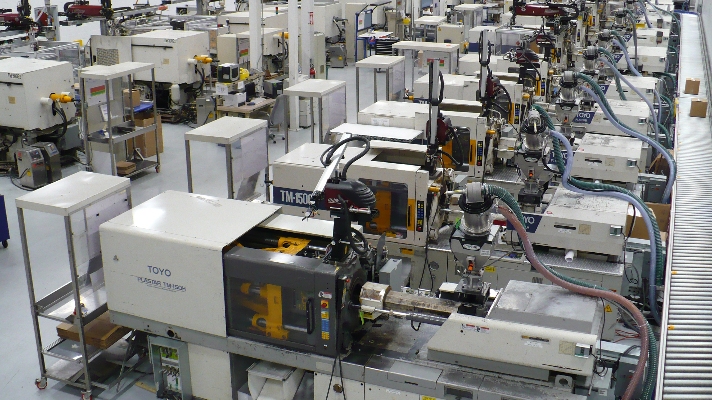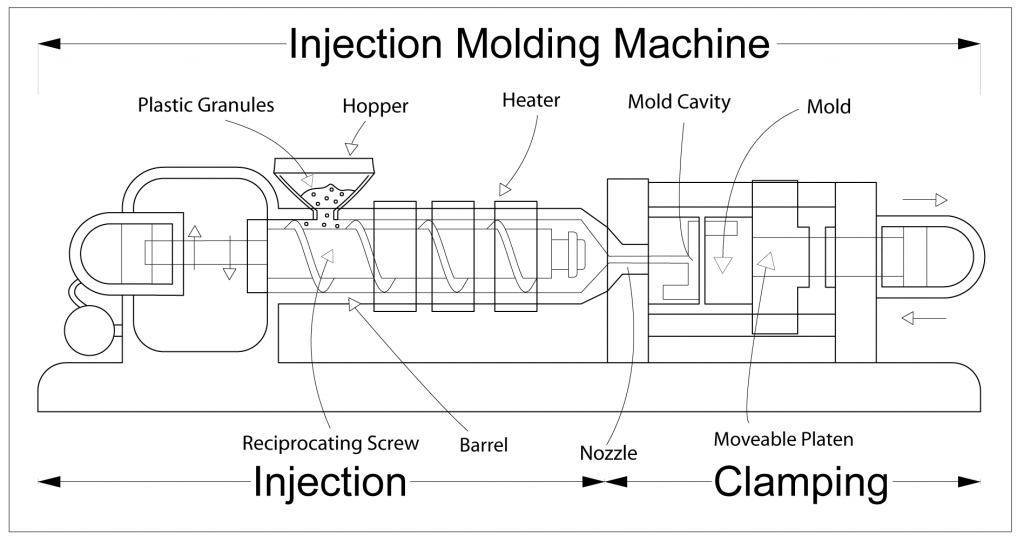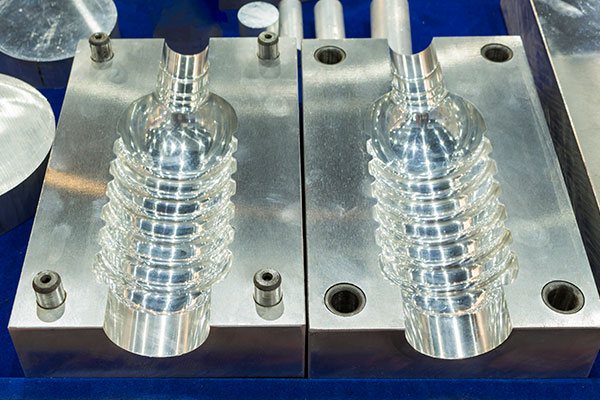Recognizing the Essentials of Plastic Injection Molding Procedures
Plastic injection molding functions as a keystone of modern manufacturing, giving a methodical technique to producing complex components with precision. This process not just encompasses the fundamental steps of melting and injecting products right into mold and mildews but additionally includes a nuanced understanding of various affecting aspects, such as temperature and stress. As sectors progressively require effectiveness and top quality, the details of this technique come to be a lot more important. Checking out these necessary components might reveal just how even minor modifications can result in considerable renovations in manufacturing outcomes, raising questions concerning the capacity for advancement in this recognized process.
What Is Plastic Shot Molding?
Plastic injection molding is an extensively used production procedure that changes polycarbonate and thermosetting products into specific and complex forms. This method is favored for its capability to produce high volumes of identical get rid of outstanding accuracy, making it a vital technique in numerous markets, consisting of automobile, customer items, and medical tools.
The procedure entails thawing the chosen plastic material and infusing it right into a mold and mildew under high stress. The mold and mildew, developed to the specifications of the desired component, allows the molten plastic to materialize as it strengthens and cools. As soon as the product has hardened, the mold is opened up, and the ended up part is expelled.
Plastic injection molding supplies several benefits, consisting of reduced waste, consistency in production, and the capability to integrate intricate designs that might be challenging with other making techniques. In addition, it sustains a wide series of materials, each supplying one-of-a-kind residential or commercial properties that can be customized for details applications. As markets proceed to introduce, plastic shot molding continues to be at the leading edge, making it possible for the growth of innovative items that fulfill evolving consumer demands.
The Injection Molding Refine
The injection molding procedure is a sophisticated method that includes numerous essential stages to create top notch plastic parts. Plastic pellets are fed right into a warmed barrel where they are melted right into a viscous liquid. This molten plastic is after that infused under high pressure right into a precision-engineered mold, which shapes the material right into the wanted type.
When the mold is filled, the plastic is allowed to cool down and strengthen, taking the shape of the mold and mildew tooth cavity. Air conditioning time is crucial, as it influences the cycle time and the last residential properties of the shaped part. After enough air conditioning, the mold and mildew opens up, and the finished part is ejected using ejector pins.

Materials Utilized in Injection Molding
Different materials can be utilized in the injection molding procedure, each offering unique properties that deal with certain applications. The most generally utilized products include thermoplastics, thermosetting plastics, and elastomers.

Thermosetting plastics, like epoxy and phenolic materials, go through a chemical modification throughout the treating process, leading to a rigid, stringent structure. These products are suitable for applications calling for high warmth resistance and structural honesty, often utilized in auto parts and electric insulators.
Elastomers, including silicone and rubber-based products, give versatility and resilience. Their one-of-a-kind homes make them ideal for applications that demand flexibility, such as gaskets and seals.
Additionally, specialized products like visit this page bio-based plastics and compounds are gaining grip for their ecological advantages and enhanced performance characteristics, broadening the extent of shot molding applications in numerous sectors. Recognizing the properties of these materials is important for choosing the appropriate type for certain projects.
Benefits of Shot Molding
Injection molding stands apart as an extremely reliable production procedure that offers countless advantages for producing complex get rid of precision. Among one of the most substantial advantages is the capability to develop intricate layouts that would certainly be impossible or challenging to achieve with various other methods (Plastic Injection Molding). The process permits comprehensive functions and limited tolerances, making sure premium elements
In addition, injection molding is recognized for its quick manufacturing capacities, making it a suitable choice for high-volume manufacturing. Once the mold is produced, components can be produced promptly, lowering lead times and boosting total productivity. This effectiveness not only reduces production expenses however additionally gives an affordable side in the market.
The convenience of materials made use of in shot molding even more improves its charm. A broad array of thermoplastics and thermosetting polymers can be utilized, enabling suppliers to choose products that finest satisfy their particular demands, consisting of flexibility, warm, and toughness resistance.
In addition, the procedure reduces waste, as excess material can typically be recycled and recycled. This sustainability aspect adds to a reduced ecological effect, making injection molding a liable manufacturing choice. Overall, the benefits of injection molding make it a preferred approach for several industries.
Aspects Affecting Product High Quality
While numerous aspects can affect product high quality in injection molding, comprehending these components is vital for accomplishing optimum outcomes. Secret elements consist of material option, refining criteria, and mold style.
Material choice plays an essential role, as various polymers show special buildings that affect flowability, stamina, and thermal stability. Insufficient product selection can lead to flaws such as warping or incomplete dental filling.
Handling specifications, click here for info including stress, temperature level, and cycle time, have to be meticulously controlled. Variations in these settings can result in inconsistencies partly dimensions and surface finish. For instance, exceedingly high temperatures may create degradation of the polymer, while insufficient pressure can lead to short shots.
Mold look at here style is just as important, as it identifies the circulation of the molten plastic and the cooling procedure. Poorly made mold and mildews may lead to unequal cooling prices, causing dimensional mistakes and residual anxieties.

Conclusion
Finally, plastic injection molding offers as an essential manufacturing process that makes it possible for the reliable manufacturing of high-grade parts. Mastery of the injection molding procedure, consisting of the understanding of products and the impact of different elements on product top quality, is vital for achieving optimal outcomes. The advantages of this technique, such as cost-effectiveness and design adaptability, additional emphasize its value across several sectors, solidifying its status as a recommended selection for high-volume production.
Plastic shot molding serves as a cornerstone of modern-day production, offering a systematic approach to generating complex components with accuracy.Plastic injection molding provides several benefits, including decreased waste, uniformity in manufacturing, and the capability to incorporate intricate designs that might be challenging with other producing methods (Plastic Injection Molding). As sectors continue to introduce, plastic injection molding continues to be at the leading edge, enabling the advancement of sophisticated products that meet evolving customer demands
The injection molding process is a sophisticated strategy that includes several vital stages to generate premium plastic components.In final thought, plastic shot molding serves as an essential manufacturing procedure that enables the effective manufacturing of top quality parts.